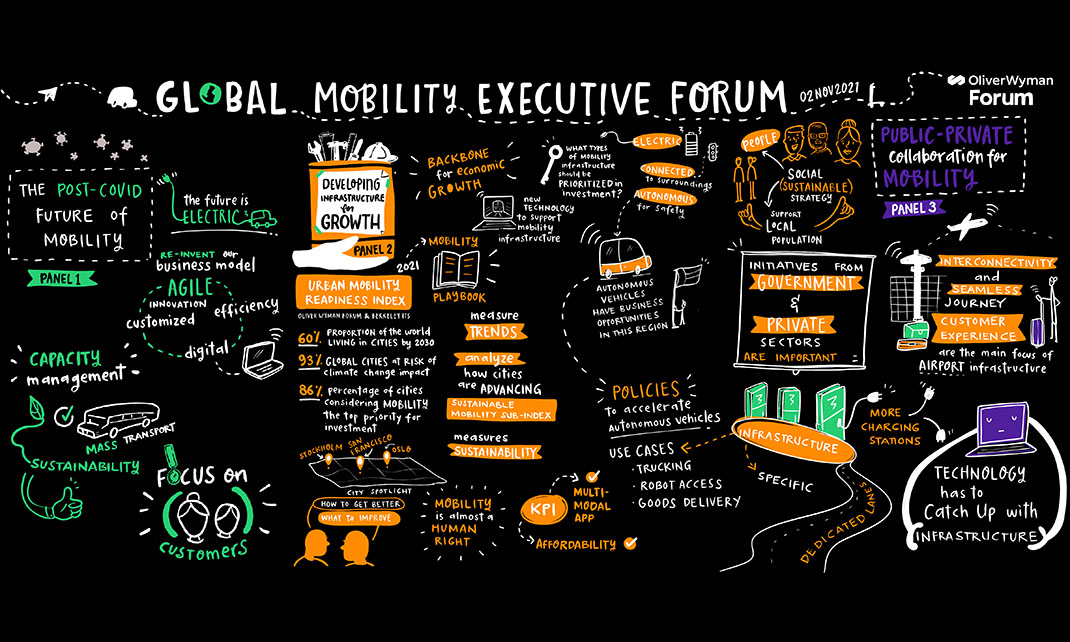The mobility industry has had to re-examine its assumptions over the past two years. We have seen the pandemic hammer the business of shared transport, whether that’s via a city metro or bus or a ride-hailing car. We have watched as cities turned over countless miles of roadways to pedestrians, cyclists, and curbside restaurants. And we have witnessed the spectacular rise of the first trillion-dollar automaker spark a headlong industry pivot to electric vehicles, or EVs.
Yet the epic disruption we are living through has underscored the role mobility must play to secure a prosperous and sustainable future. And there is an emerging consensus about the path forward, one that was articulated by many participants at the Oliver Wyman Forum’s Global Mobility Executive Forum in Dubai in November.
That consensus starts with public transportation systems. They have been hit hard by COVID-19 but public transport must continue to play a foundational role in the world’s great cities. Trains, buses, and other public transit systems remain the most accessible, affordable, and environmentally sustainable means of moving people around urban areas. The pandemic-induced drop in ridership and revenues has challenged the business model of most systems, though. To meet those challenges, successful operators will need to customize their solutions to local needs, and find partners to fill gaps in technology and other areas.
Next, leaders must recognize that sustainability holds the key to the future of mobility, and design their strategies and investment plans accordingly. Our latest Urban Mobility Readiness Index underscores that fact, showing that the top cities on overall mobility also rank among the leaders in our new sub-index on sustainable mobility.
Modern, sustainable mobility infrastructure will depend on three technologies: electrification, connectivity, and automation. Partnership and collaboration are critical to deploying them effectively. The private sector has the know-how and experience to effectively deploy these technologies and related services, but government has to make the first move to develop the underlying infrastructure. Only then can the private sector engage and play its full part, as the United Kingdom demonstrated with its development of the London Olympic Park a decade ago.
In developing infrastructure, the whole is greater than the sum of the parts. There are many public transit authorities but few agencies empowered to oversee the multi-modal transport systems cities need to thrive in the decades ahead. That needs to change if we are to provide seamless connectivity between rail, road, and active mobility to assure a more sustainable future.
Data sharing is an area where cooperation is particularly attractive as mobility services both rely upon and generate rich data. Whereas certain technologies like automation are wholly dependent on data, other services may see an opportunity to monetize their data assets. Public authorities will have a big role to play here, whether that involves forging partnerships among private-sector players or setting a regulatory agenda designed to drive change.
Finally, the challenge for cities lies in the fact that developing mobility infrastructure is a linear process, often with long lead times, while climate risks can materialize suddenly. Public-private partnerships need to adopt an agile approach and keep both timetables in mind as they develop infrastructure.

